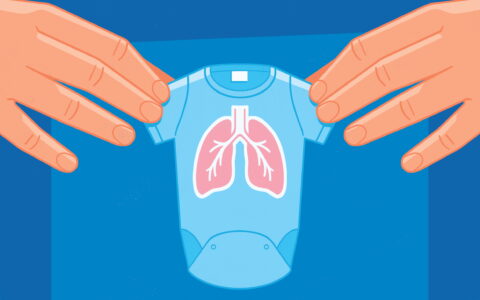Researchers identified potential biomarkers in a recent study that may help to predict pulmonary hypertension (PH) in particularly vulnerable premature babies, a potentially important step in identifying those at-risk for a dangerous comorbidity.
The study, published in the Pediatric Pulmonology journal in March 2018, analyzed echocardiographic images and biomarkers for extremely low gestational age newborns (ELGANs)—infants born between 23 and 29 months weeks gestational age.
The identification of early biomarkers that can predict PH in the ELGAN population allows for the potential for intervention before onset, which could help to advance the health of this vulnerable infants. In addition, early intervention may potentially lead to additional benefits, including decreased length of stay in the neonatal intensive care unit (NICU) and better quality-of-life as the infants age.
“The ability to identify a combination of markers suggestive of PH would be a tremendous advance for the field.”
“PH may afflict anyone, but there are certain high risk groups, including formerly premature children,“ said Eric Austin, M.D., associate professor of pediatrics and director of the Pulmonary Hypertension Program. The Pediatric Pulmonary Hypertension Center at the Monroe Carell Jr. Children’s Hospital at Vanderbilt is one of eight pediatric centers in the United States accredited for PH care by the Pulmonary Hypertension Association.
“The ability to identify a combination of markers suggestive of PH would be a tremendous advance for the field, which is searching for ways to determine which children to screen and when to screen using imaging and other modalities,” Austin continued.
Higher levels of citruline linked to severe PH likelihood
The study, conducted by Vanderbilt University Medical Center researchers at Monroe Carell Jr. Children’s Hospital at Vanderbilt, found a significant relationship between the severity of PH in patients and the levels of the amino acid citrulline measured at day seven of life. Specifically, if two patients differed in their citrulline levels by a factor of two, the patient with higher citrulline levels was 3.44 times less likely to develop more severe PH.
The study also found that the levels of nitric oxide (NO) metabolites—specifically nitrite and nitrate—present at time of enrollment, which was within a week of birth for all subjects, was linked to a greater likelihood of severe PH. Researchers were led to believe that increased urinary NO appeared to have the greatest association with PH severity, suggesting that the period immediately after birth was a time of high NO synthesis. One source of NO production comes from the recycling of citrulline, perhaps explaining the link between high NO levels, low citrulline levels, and increased risk of PH.
“Nitric oxide metabolites, while in need of further research, are interesting potential biomarkers that may help to better identify those premature infants at greater risk of developing PH,” said Michael O’Connor, M.D., assistant professor of pediatrics.
Unlike previous studies, this study did not find an association between PH and more severe diagnoses, including bronchopulmoary dysplasia (BPD). The patients analyzed did, however, show that PH can still develop in ELGANs that have less severe respiratory issues. The infants in the study all either had mild or moderate PH, with none having severe PH.
Multiple biomarkers analyzed
In addition to NO and citrulline levels, plasma isoprostane and isofuran levels were analyzed as biomarkers.
The infants included in the study—of which there were 11—were all managed without PH-specific medications, and before 12 months of age all demonstrated a normal echocardiogram. For many ELGAN patients with PH, however, resolution in the first year of life is not achieved, which makes identifying biomarkers that can lead to early intervention of great importance.
Biomarkers are especially helpful for the vulnerable ELGAN population because they can be identified without invasive procedures.
”This cohort of premature infants has facilitated a number of important clinical research questions, including those with severe BPD and PH,” said Paul Moore, M.D., professor of Pediatrics and Pharmacology and Director of the Division of Pediatric Allergy, Immunology, and Pulmonary Medicine.







